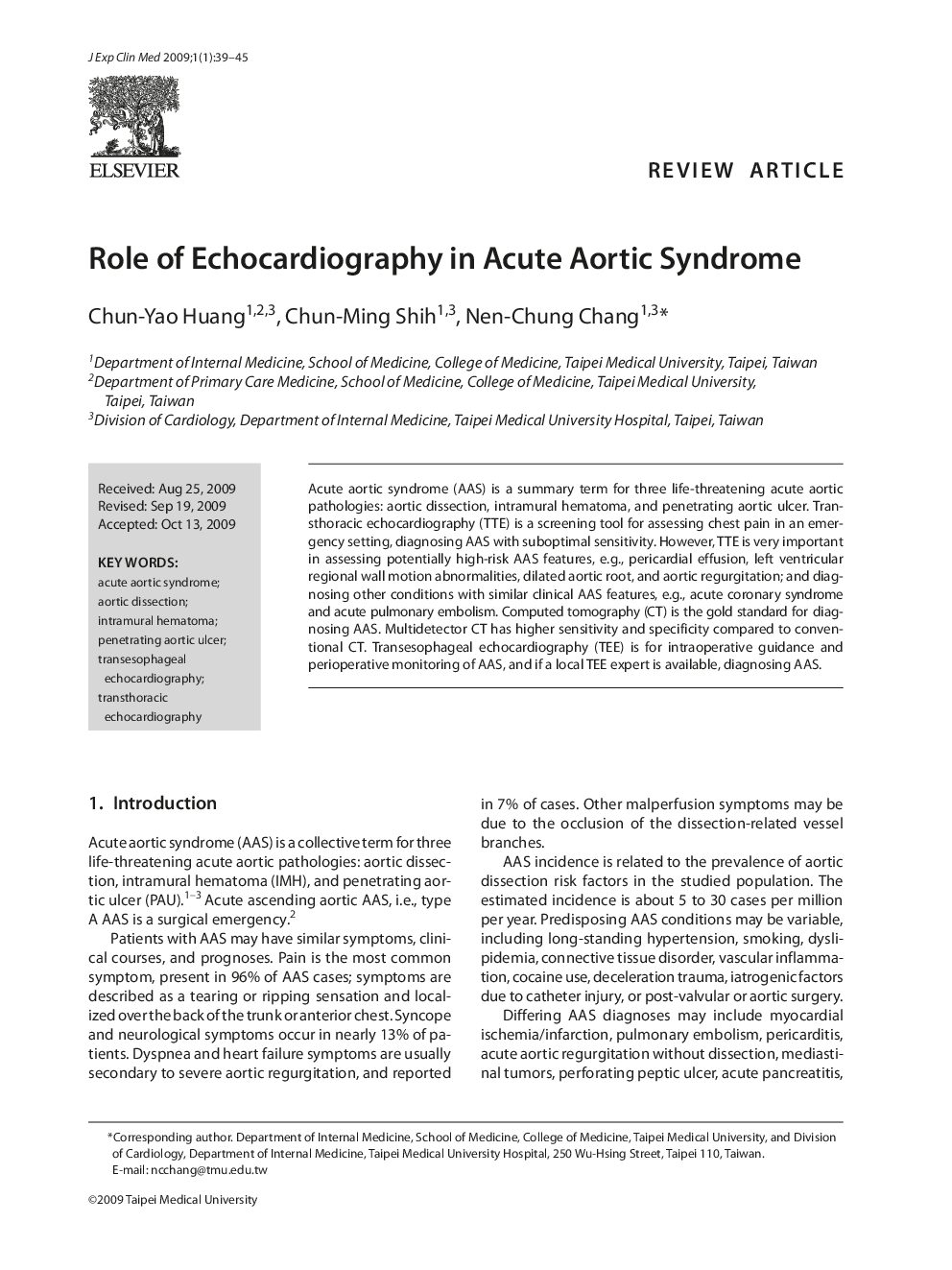| Article ID | Journal | Published Year | Pages | File Type |
|---|---|---|---|---|
| 3478147 | Journal of Experimental & Clinical Medicine | 2009 | 7 Pages |
Acute aortic syndrome (AAS) is a summary term for three life-threatening acute aortic pathologies: aortic dissection, intramural hematoma, and penetrating aortic ulcer. Transthoracic echocardiography (TTE) is a screening tool for assessing chest pain in an emergency setting, diagnosing AAS with suboptimal sensitivity. However, TTE is very important in assessing potentially high-risk AAS features, e.g., pericardial effusion, left ventricular regional wall motion abnormalities, dilated aortic root, and aortic regurgitation; and diagnosing other conditions with similar clinical AAS features, e.g., acute coronary syndrome and acute pulmonary embolism. Computed tomography (CT) is the gold standard for diagnosing AAS. Multidetector CT has higher sensitivity and specificity compared to conventional CT. Transesophageal echocardiography (TEE) is for intraoperative guidance and perioperative monitoring of AAS, and if a local TEE expert is available, diagnosing AAS.
